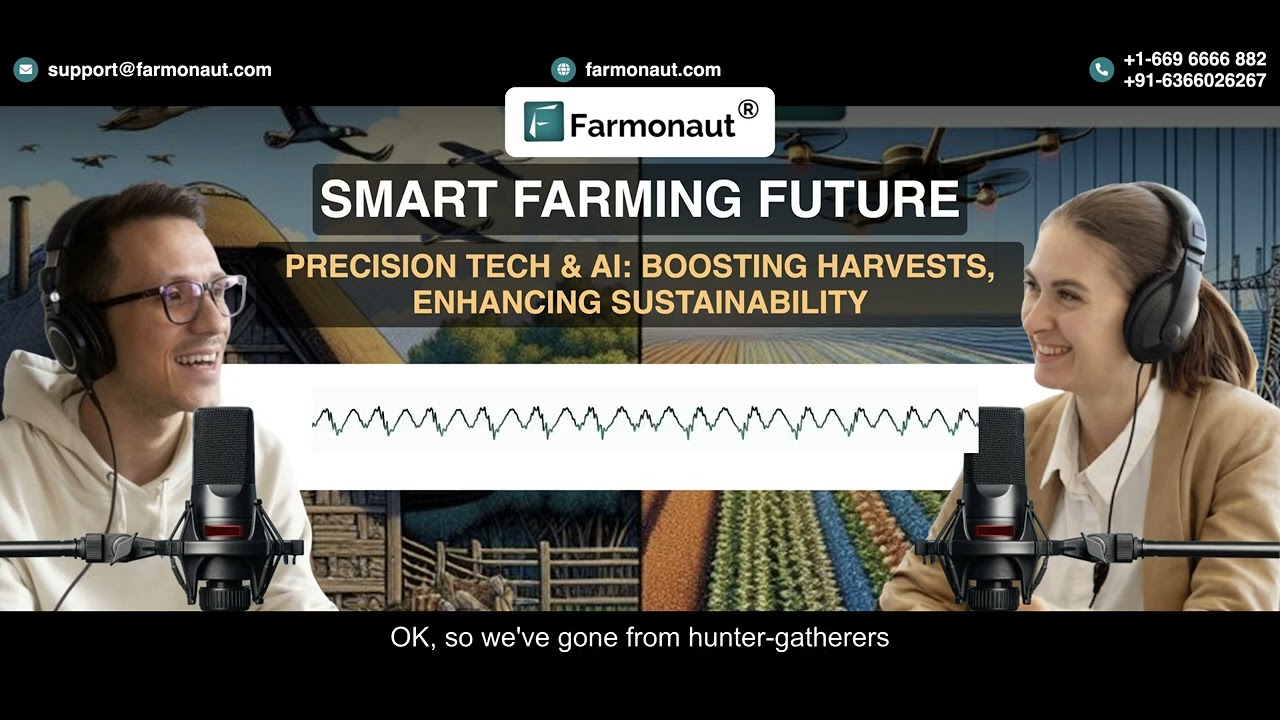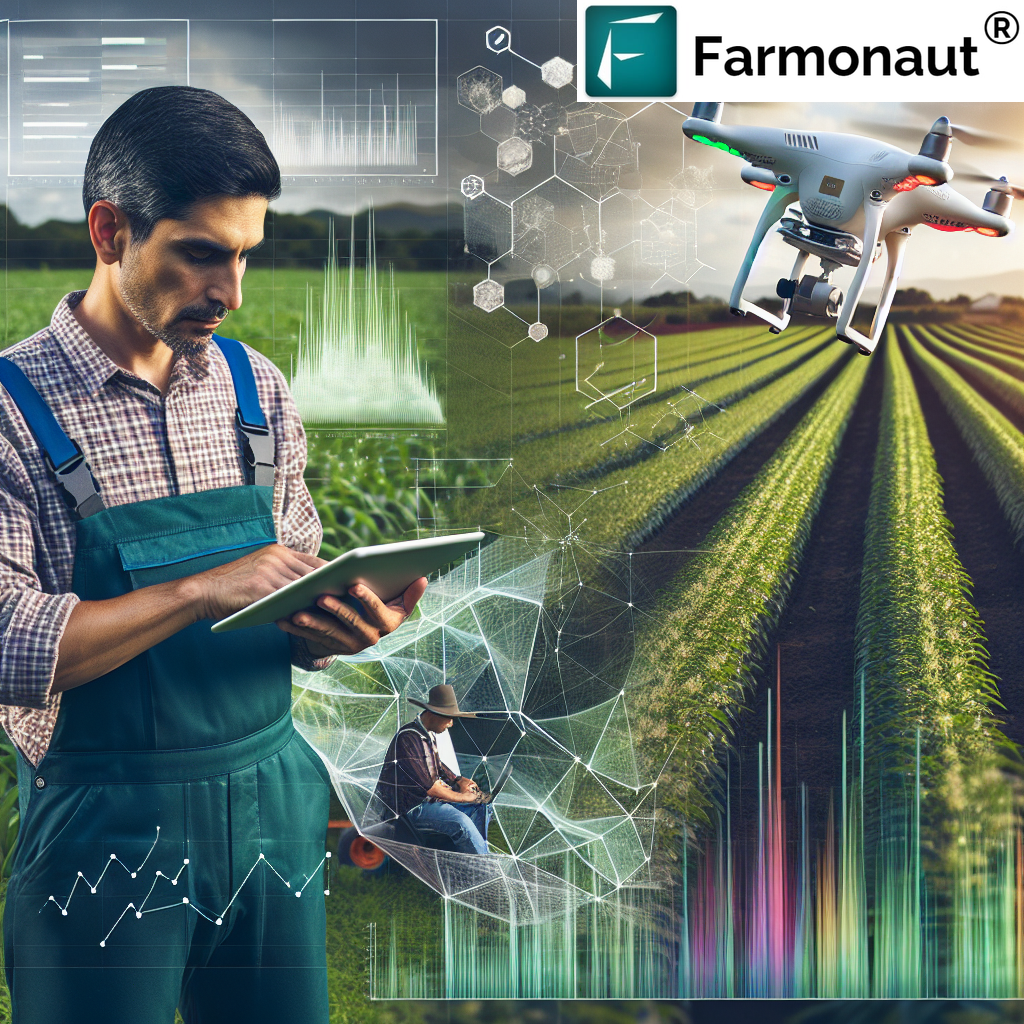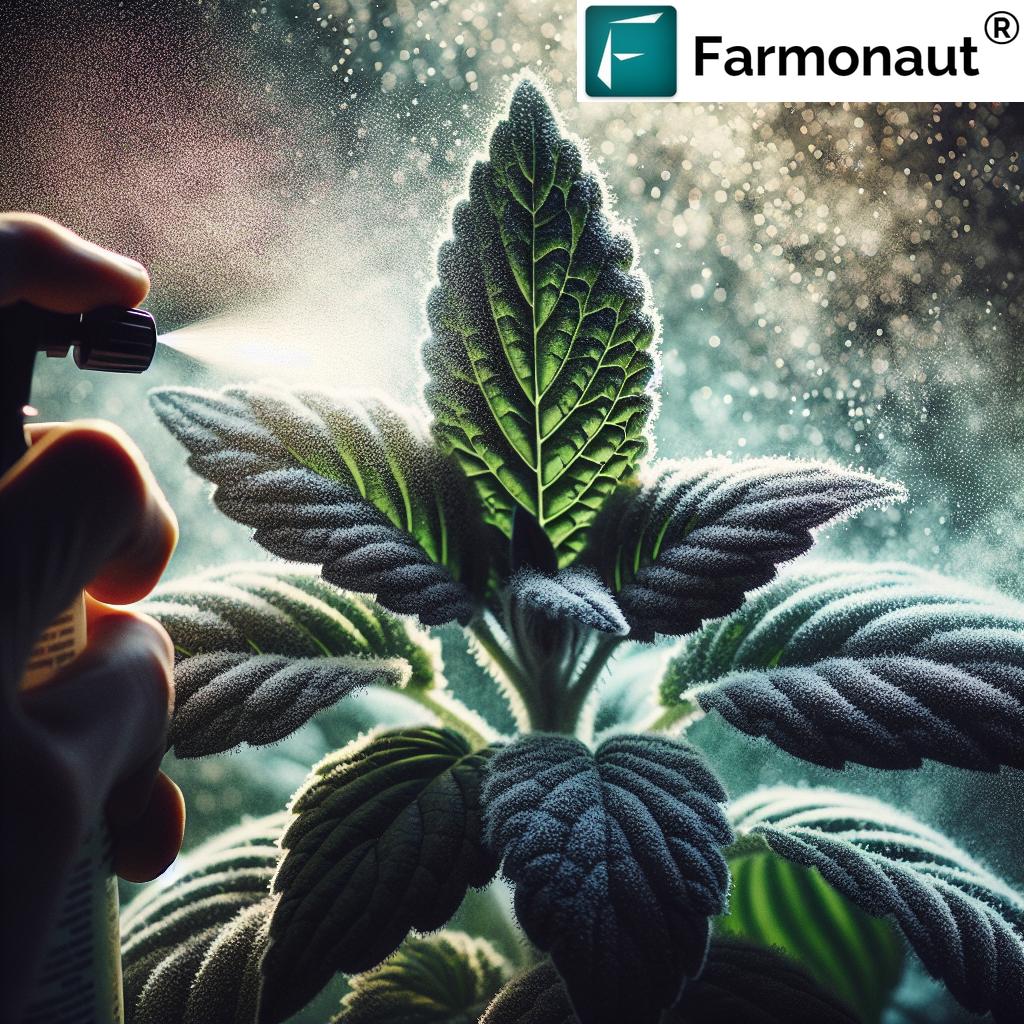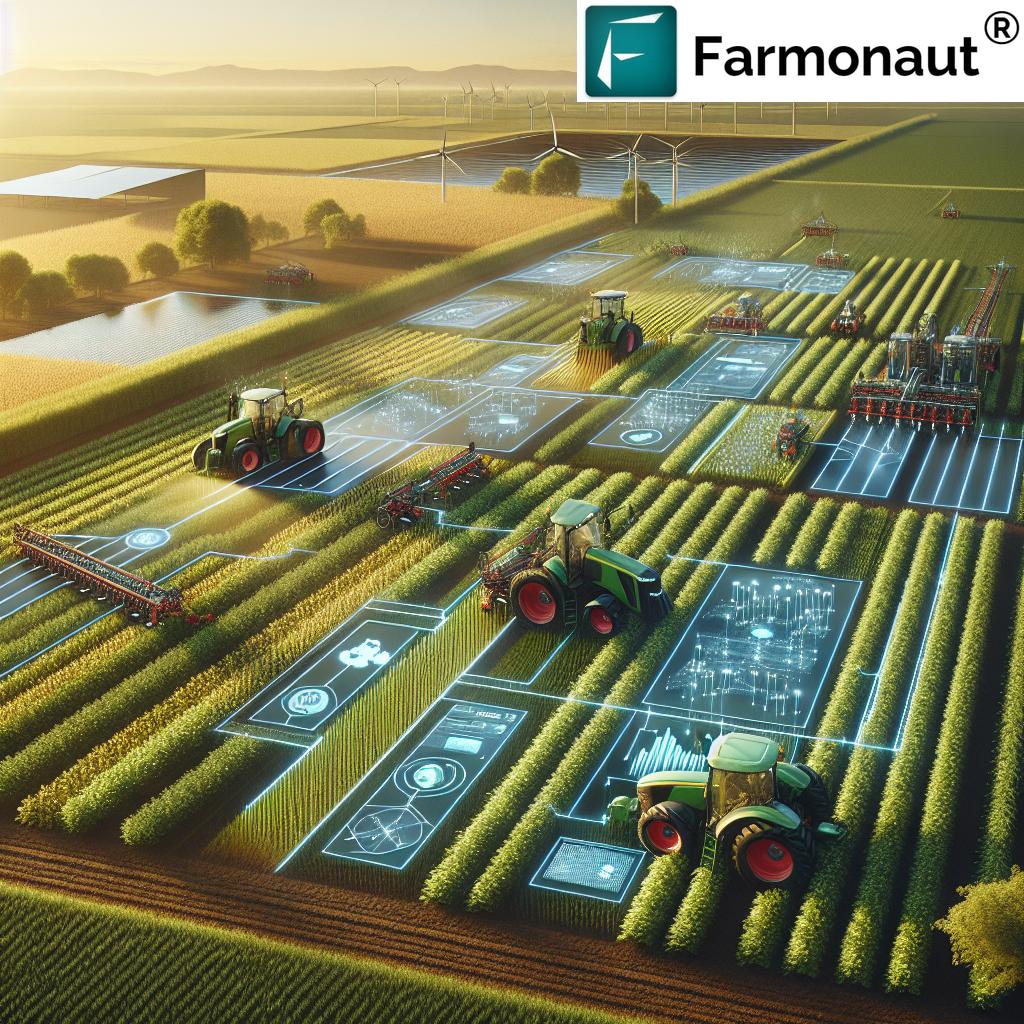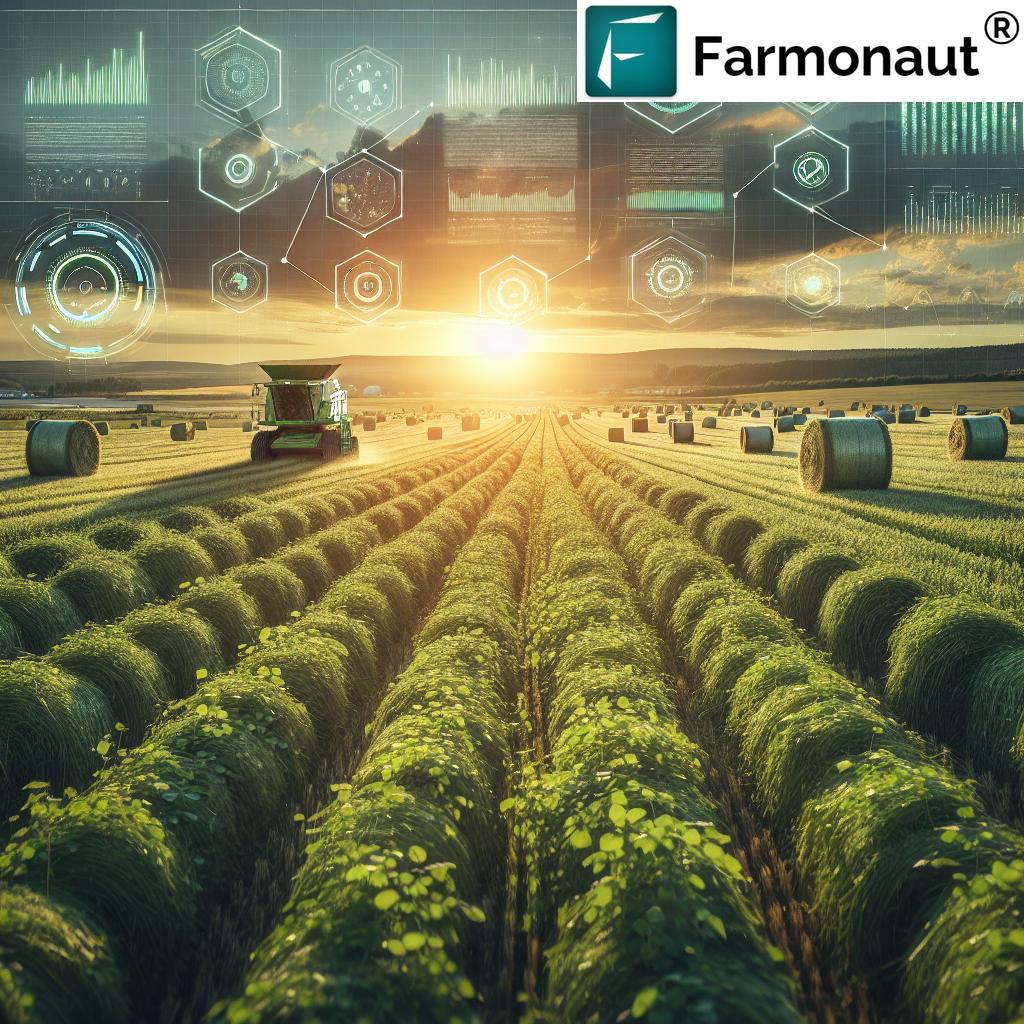Modern Commercial Farming Techniques: 7 Key Innovations Revolutionizing Rice Farming
“Precision rice farming can reduce water usage by up to 50% compared to traditional flooding methods.”
“Laser land leveling in rice fields can increase crop yields by approximately 15%.”
Introduction
Modern agriculture has undergone a sweeping transformation with the rise of modern commercial farming techniques. In countries like India, these advancements have reshaped how rice is cultivated—from seed to harvest—by integrating cutting-edge technology, sustainable practices, and advanced crop management strategies. The impact is significant: increased yields, reduced water usage, improved soil health, and minimized environmental emissions.
This blog delves into the 7 key innovations driving modern rice farming techniques: from the System of Rice Intensification (SRI) and Alternate Wetting and Drying (AWD) to advanced tech integration like IoT, autonomous machinery, and sustainable polyculture systems. With the integration of real-time management platforms and data-driven insights, farmers are now equipped to meet the ever-growing challenges of feeding a rising population amid climate volatility.
We’ll explore each technique, summarize their benefits in a comprehensive comparison table, and highlight how solutions like Farmonaut enable precision, sustainability, and greater profitability in modern agriculture.
Advanced Crop Management: Revolutionizing Modern Rice Farming Techniques
Modern commercial farming techniques employ data-driven, innovative crop management systems to optimize resource use and productivity. Three standout methods—SRI, AWD, and DSR—are transforming rice cultivation in India, Cambodia, and beyond. These modern rice farming techniques focus on reducing waste, conserving water, and improving soil fertility while increasing yields.
1. System of Rice Intensification (SRI): Intensification for Maximum Yields
SRI (System of Rice Intensification) is a revolutionary modern farming technique originating in Madagascar. SRI rethinks traditional rice-cultivation by:
- Planting younger seedlings: Seedlings are transplanted when they are 8–14 days old, reducing transplant shock and maximizing vigor.
- Wider spacing: Reduces competition for nutrients, water, and sunlight. A single seedling is planted per hill with 25×25 cm (or wider) spacing.
- Intermittent irrigation: The fields are not continuously flooded; instead, intermittent wetting and drying optimize root health and promote aerobic soil conditions.
- Soil and nutrient management: Using organic matter and compost to improve soil fertility naturally.
Studies report that SRI can increase yield by up to 40% while reducing water usage by 25–50%. Countries like India and Cambodia have witnessed significant benefits, positioning SRI among the leading modern techniques of farming.
2. Alternate Wetting and Drying (AWD): Smart Water Conservation in Rice Fields
AWD (Alternate Wetting and Drying) is a water-saving technique where rice paddies are allowed to partially dry before being irrigated again. This practice:
- Reduces water use by 20–40% by avoiding continuous flooding.
- Cuts methane emissions significantly, as aerobic soil conditions reduce the production of this potent greenhouse gas.
- Maintains or increases yields: Yields are often stable or even improved if managed correctly.
AWD addresses environmental concerns and resource limitations, making it integral to sustainable rice farming. The adoption of AWD in Vietnam is a best-practice reference for other rice-producing countries.
3. Direct Seeded Rice (DSR): Reducing Labor & Streamlining Operations
DSR (Direct Seeded Rice) is a modern farming technique where rice seeds are sown directly into the field, eliminating the transplanting stage. This method enables:
- Reduction in labor and costs due to the removal of the nursery and transplantation steps.
- Lower water usage, as DSR requires field saturation only during germination, not continuous flooding.
- Earlier crop establishment and potential for double-cropping.
However, DSR requires effective weed management and the use of herbicides or mechanical tools. It’s gaining traction in India and Southeast Asia but demands proper knowledge and timely management to maximize yields and keep emissions and resource use in check.
“Precision rice farming can reduce water usage by up to 50% compared to traditional flooding methods.”
Integration of Technology in Modern Commercial Farming Techniques
The incorporation of advanced technology in modern commercial farming techniques has transformed operations across irrigation, crop management, and sustainability. Automation, IoT, and satellite-based insights are at the core of this shift, offering farmers a toolkit to optimize every aspect of their practice.
4. Autonomous & Automated Machinery: Boosting Efficiency & Addressing Labor Shortages
With labor shortages a growing concern, autonomous machinery—including robotic harvesters and solar-powered irrigation systems—helps fill operational gaps. Such advanced machinery enables:
- 24/7 farm operations: Machines can operate round-the-clock for planting, harvesting, and spraying.
- Consistent water management: Solar-powered irrigation offers energy-efficient, reliable watering cycles, even in areas with limited grid power.
- Reduced labor costs while maintaining or improving farm productivity.
Autonomous systems are particularly effective in large-scale rice farming. According to AP News, the adoption of automation is accelerating, promising an era of highly efficient, resource-smart agriculture.
Farmonaut’s satellite-based crop management platform complements such machinery, providing real-time crop health monitoring and resource optimization tools. With our technology, farmers access detailed insights on vegetation, soil moisture, and pest pressures—crucial for timely interventions and maximizing yields.
Learn more about large-scale farm management with Farmonaut’s platform.
5. Internet of Things (IoT): Smart Monitoring for Precision Agriculture
The Internet of Things (IoT) includes connected devices that monitor soil moisture, temperature, humidity, and other agronomic parameters. In rice farming, IoT enables:
- Precise irrigation scheduling: Water application is automated and matches actual crop demand, avoiding under- or over-irrigation.
- Efficient fertilizer and pesticide use: Reduces resource wastage and environmental impact.
- Automated workflows: Sensors and controls can trigger irrigation pumps or warn of pest threats.
Modern IoT systems often incorporate solar panels and microcontrollers for energy autonomy and remote operation. As detailed in scientific research, such systems have enabled smart water irrigation and substantially reduced labor requirements.
At Farmonaut, our API allows agribusinesses and farm technology providers to integrate satellite and weather data directly into their own systems. This enhances the capabilities of IoT deployments in rice farming. Explore Farmonaut’s API here. For in-depth developer integration, check out our API Developer Docs.
6. Remote Sensing and Satellite Imagery: Real-Time Farm Insights
Remote sensing with satellites and drones is an advanced facet of modern techniques in agriculture. Leveraging high-resolution, multi-spectral imagery delivers critical insights:
- NDVI (Normalized Difference Vegetation Index): Reveals crop health, pest infestations, nutrient deficiencies, and irrigation needs.
- Soil moisture mapping: Helps direct irrigation where it’s truly required.
- Yield prediction and anomaly detection: Preventing losses and maximizing resource utilization.
Farmonaut’s satellite-based platform brings such advanced analytics to Android, iOS, web, and API. It empowers both individual farmers and large enterprises to act swiftly and accurately—try the Farmonaut app today to transform your rice and commercial crop management!
Sustainable Practices for Enhanced Productivity
Sustainability is a cornerstone in modern commercial farming techniques. Innovations like rice-fish systems and rice-duck farming exemplify how integrating biodiversity can control pests, fertilize soils, and diversify income—all while reducing chemical input and supporting environmental balance.
7. Rice-Fish Systems: Biodiversity for Productivity and Pest Control
Rice-fish systems involve integrating fish into flooded rice paddies. This approach offers:
- Natural pest and weed control—Fish eat insects and weeds, reducing the need for chemical pesticides.
- Enhanced soil fertility—Fish waste acts as a natural fertilizer.
- Additional income—Harvested fish provide income or nutrition beyond the rice crop.
- Biodiversity boost—Supports broader ecosystem services.
Farmers practicing rice-fish culture witness improved yields, enhanced sustainability, and reduced environmental impact.
Rice-Duck Farming: Ecological Weed and Pest Management
Rice-duck farming includes raising ducks in rice fields to:
- Control pests—Ducks eat insects and snails.
- Minimize weeds—Their movement uproots young weeds, eliminating the need for herbicides.
- Fertilize soil—Duck droppings return nutrients naturally.
- Reduce methane & emissions—By improving soil aeration and ecological balance.
This low-cost, chemical-free system is gaining popularity as a sustainable, modern technique of farming in India and Asia, supporting both farm productivity and ecological harmony.
Climate-Resilient Practices in Modern Rice Farming Techniques
Unpredictable weather, erratic rainfall, and heatwaves require climate-resilient practices for safeguarding food security. Developing and adopting resilient rice varieties and monitoring farm carbon footprints are now critical in modern techniques in agriculture.
Climate-Resilient Seeds & Genetic Innovation
Breeding and distributing climate-resilient rice varieties ensures better performance under stress. These seeds are engineered to:
- Resist drought and heat
- Withstand pests and diseases
- Require less water for growth
For example, Indian research institutions have launched new rice varieties that thrive in dry, flood-prone, or salinity-hit regions, equipping farmers for a changing climate. Farmonaut’s carbon footprinting tools help growers monitor and reduce their environmental emissions.
Discover more about carbon tracking for sustainable rice farming here.
“Laser land leveling in rice fields can increase crop yields by approximately 15%.”
Comparison Table: 7 Key Modern Commercial Farming Techniques for Rice
| Technique Name | Description | Estimated Yield Improvement (%) | Water Savings (%) | Technology Integration Level | Sustainability Benefit |
|---|---|---|---|---|---|
| SRI (System of Rice Intensification) | Planting younger seedlings with wider spacing and reduced water usage | Up to 40% | 25–50% | Medium | Less water and fertilizer use; lower emissions |
| AWD (Alternate Wetting & Drying) | Periodic drying and re-flooding of rice fields | 0–10% | 20–40% | Low–Medium | Significantly reduces methane emissions |
| DSR (Direct Seeded Rice) | Sowing seeds directly, removing transplant stage | 10–15% | 20–35% | Medium | Reduces labor & water, increases efficiency |
| IoT-Enabled Smart Irrigation | Using sensors for automated, precise irrigation management | 10–20% | 30–50% | High | Water conservation, optimized resource use |
| Autonomous Machinery | Robotic harvesters, solar-powered irrigation | 10–30% | 15–30% | High | Addresses labor shortages; reduces fuel & chemical use |
| Rice-Fish/Rice-Duck Integrated Systems | Rice co-cultured with fish or ducks for natural pest & weed control | 5–20% | 10–15% | Low–Medium | Enhanced biodiversity, reduced pesticides |
| Remote Sensing & Satellite-Based Management | Satellite imagery & AI for crop health, soil monitoring | 10–25% | 10–20% | High | Enables precision inputs, reduces waste |
Farmonaut: Precision, Transparency, and Sustainability in Modern Farming
At Farmonaut, we are committed to making precision agriculture affordable and accessible for farmers worldwide. Our platform seamlessly integrates satellite-based data, AI, blockchain, and machine learning to offer game-changing solutions in modern crop management and sustainability. Here’s how:
- Real-Time Crop Health Analytics: Satellite imagery (NDVI, EVI), soil moisture mapping, and pest detection inform timely, targeted decisions—maximizing yields and optimizing resource use.
- AI-Based Advisory: Personalized, data-driven recommendations help growers implement best practices for irrigation, fertilization, and disease management with efficiency and confidence.
- Blockchain Traceability: Ensures secure and transparent supply chains. Find out how our traceability solution benefits food processors and cotton/textile industries.
- Fleet & Resource Management: Keep your agricultural fleets running efficiently, cut operational costs, and improve logistics. See Farmonaut’s fleet management solution.
- Carbon Footprinting: Real-time monitoring and reduction of farm emissions—key for sustainability and regulatory compliance. Track and reduce your environmental impact here.
- Crop Loan & Insurance Verification: Facilitate secure, satellite-based assessments for loans and insurance. Streamline agricultural financing now.
Our solutions scale for individual farmers, large agribusinesses, and government agencies, all via a simple web, Android, or iOS app—no expensive hardware needed.
Enhance your plantation or forest management with Farmonaut’s AI-driven advisory solutions!
Subscription-based and API-integrated, Farmonaut enables both small and large-scale farms to compete at the forefront of the agricultural revolution.
Challenges and Considerations in Modern Commercial Farming
While modern techniques of farming offer undeniably powerful benefits, several challenges remain before widespread, equitable adoption is attained:
- Skill and knowledge gaps: Techniques like SRI and DSR require specialized knowledge (on planting, weed management, etc.), which can limit adoption, especially among smallholders.
- Economic barriers: Upfront investment in technology (sensors, machines, apps) and training can be prohibitive, particularly in developing regions like rural India.
- Environmental trade-offs: For example, while AWD reduces methane emissions, improper water management could increase nitrous oxide emissions, another potent greenhouse gas (learn more).
- Integration complexity: Merging new iot devices with traditional farming operations may cause workflow confusion without adequate support or training.
Continued research, governmental support, and data-driven advisory systems—like those offered through digital platforms—are essential to help farmers navigate these hurdles and extract the maximum benefit from advanced farming practices.
Frequently Asked Questions (FAQ)
-
What are the most effective modern commercial farming techniques for rice?
Key methods include SRI, AWD, DSR, IoT-enabled irrigation, autonomous machinery, satellite-based management, and integrated polyculture systems like rice-fish and rice-duck farming. Each improves yields, reduces water, and enhances sustainability in different ways.
-
How does Farmonaut help farmers implement modern techniques?
We provide satellite-based crop health monitoring, AI advisory, resource/fleet management, and blockchain traceability—all accessible via web, Android, iOS apps, and an API. These solutions help optimize water, inputs, and decision-making for better results and sustainable farming.
-
How do these modern practices impact water usage and emissions?
Practices such as SRI, AWD, and IoT-controlled irrigation can cut water usage by 25–50%. AWD and improved irrigation substantially curb methane emissions. Carbon footprint tracking through Farmonaut helps manage and reduce total greenhouse gas output.
-
Are modern rice farming techniques suitable for smallholders?
Yes. While some methods require knowledge and initial investment, many (like SRI, direct seeding, and duck/fish integration) can be implemented on smaller plots, especially when supported by digital advisory and remote monitoring platforms.
-
How can I access Farmonaut’s technology?
Use our web app (click here), Android app, or iOS app. For API integration, visit our API portal and API Documentation.
Conclusion: The Future of Modern Commercial Farming Techniques
Modern commercial farming techniques have fundamentally revolutionized agriculture, elevating productivity, sustainability, and operational efficiency across the rice sector—especially in major producers like India and Southeast Asia.
- Advanced practices like SRI, AWD, and DSR optimize water usage, reduce labor, and boost yields.
- Integration of technology—via IoT devices, autonomous machinery, remote sensing, and AI advisory—brings real-time, targeted management within reach of every farmer.
- Sustainable systems such as rice-fish and rice-duck farming, coupled with climate-resilient seeds, offer resilience and diversified farm income.
- Modern solutions—like those from Farmonaut—provide transparent, data-driven decisions, promoting both profitability and environmental responsibility.
Embracing these innovative, modern farming techniques is essential for the future of agriculture. As technology, research, and farmer know-how continue to advance, we must collectively support scalable solutions that can meet global food demand while safeguarding natural resources.
Ready to revolutionize your farming operations? Download the Farmonaut app or use our web portal today to start your journey toward precision, sustainability, and profitability!





